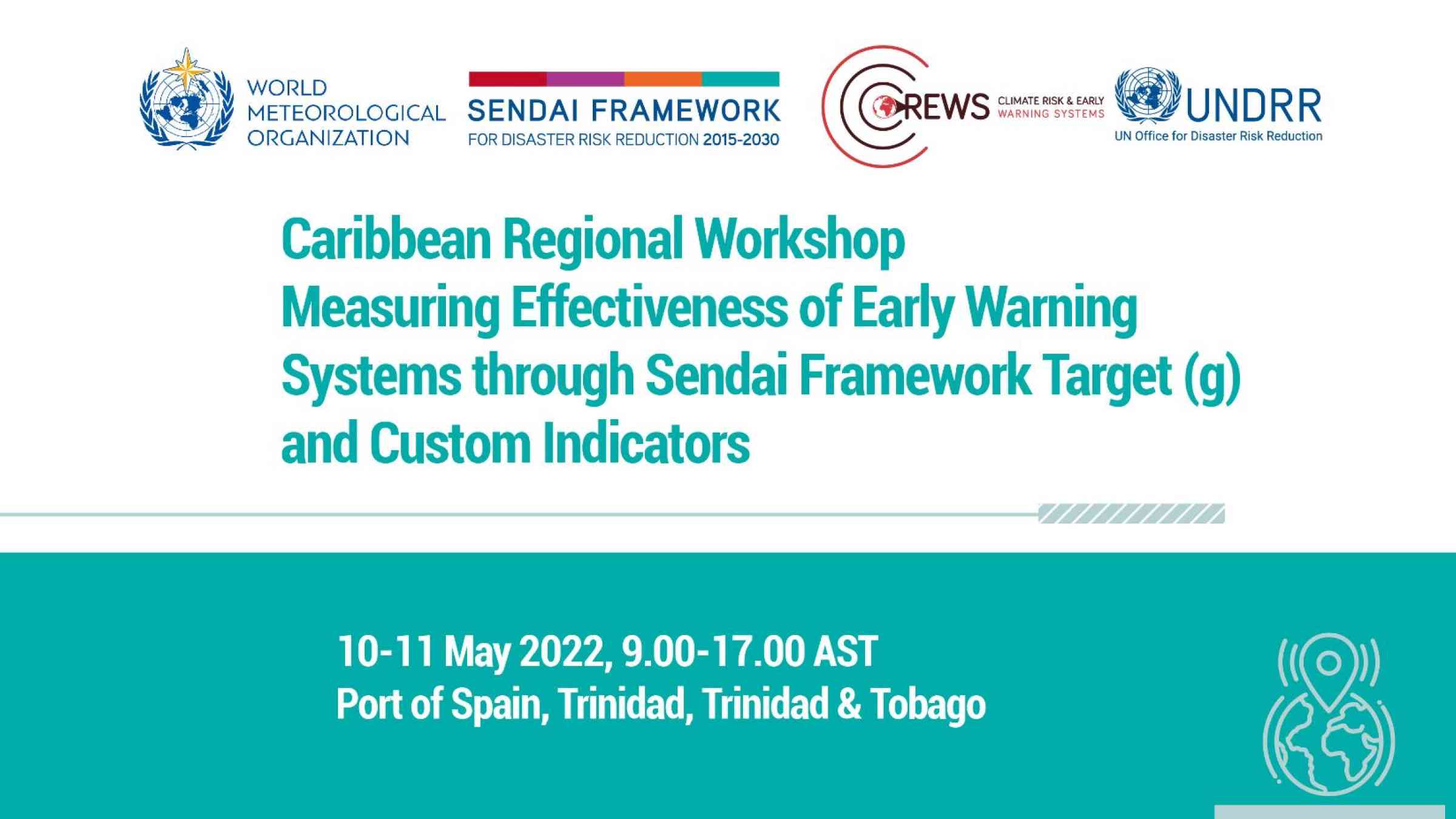UNDRR ROAC: Caribbean Regional Workshop - Measuring Effectiveness of Early Warning Systems through Sendai Framework Target (g) and Custom Indicators

- English
This two-day and a half-day workshop aims to: Strengthen the capacity of the Sendai Framework Monitor focal points and organizations who are engaged in monitoring the SF implementation to understand and use Target G and custom indicators in their efforts to measure the effectiveness of early warning systems.
Participants will be presented with a broad range of topics and issues that together address each of the early warning systems and risk assessment capacities in the following areas corresponding to one of five identified areas for multi-hazard early warning system effectiveness assessment:
- Governance
- Disaster Risk Knowledge
- Detection, Monitoring, Analysis, and Forecasting (DMAF)
- Dissemination and Communication
- Preparedness and Response
Background
This training package contributes to implementing the joint UNDRR-World Meteorological Organization (WMO) Measuring Effectiveness of Early Warning Systems through Sendai Framework Monitoring project with additional implementing support of the World Bank Global Facility for Disaster Reduction and Recovery (GFDRR). One aim of the project is to better support Least Developed Countries (LDCs) and Small Island Developing States (SIDS) in measuring the effectiveness of their (multi-hazard) early warning systems and improving them over time.
One of the seven global targets of the Sendai Framework for Disaster Risk Reduction 2015-2030, Target (g), aims to “substantially increase the availability of and access to multi‑hazard early warning systems and disaster risk information and assessments to the people by 2030”. It is supported by six of the 38 indicators of the Sendai Framework Monitoring (SFM) system developed by the Open-ended Intergovernmental Expert Working Group on Indicators and Terminology Relating to Disaster Risk Reduction (OIEWG) and endorsed by the UN General Assembly.
Based on the experience of implementing early warnings systems (EWS) initiatives under the CREWS Initiative, there is a need to further explore how countries can better assess and monitor the effectiveness of their national EWS. The Target (g) methodology and associated indicators are reflecting the four components of an EWS as outlined in the OIEWG Report and the Technical Guidance Notes. While those indicators measure the availability of and access to EWS, they do not provide a measure on the quality/effectiveness of those.
Therefore, a set of early warning custom indicators for countries to choose from in the SFM system, were developed under the project in order for countries to measure, on a voluntary basis, the effectiveness of their MHEWS as per their own individual contexts.
Following the development of these custom indicators, a corresponding training package was developed to support the capacity development of Sendai Framework Monitor focal points and their partners to understand and use the new indicators.
Explore further
Is this page useful?
Yes No Report an issue on this pageThank you. If you have 2 minutes, we would benefit from additional feedback (link opens in a new window).